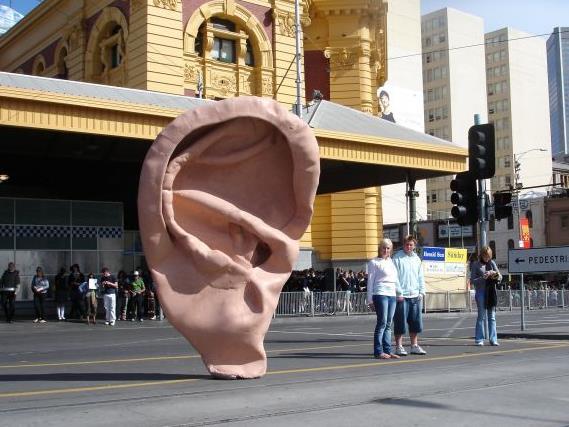Snuff Puppets outside Flinders Street Station
Melbourne is Australia’s arts capital – a place of great creativity and inspiration. But this did not all happen by accident. It is the result of careful planning and an unswerving commitment to our city’s most creative souls.
That’s why, at a time of tight Federal and State budgets and cuts to the sector, the City of Melbourne’s investment in, and commitment to, the arts is more important than ever before.
Each year, the City of Melbourne spends over $14 million on the arts – through arts grants, spaces for artists, arts programing, mentoring for young people, programs for young artists, workshops, public art, theatre, music, literature, live art, street art, dance, performance. The list goes on.
To ensure this continues, the City of Melbourne has just released its Arts Strategy 2014-17, which outlines how we will support artists and work with the sector for the next three years.
The new strategy is a unique document, because at its core is the needs and aspirations of artists. We believe that is as it should be: if Melbourne’s place in Australia is at the forefront of new and exciting arts, then government needs to recognise that strength and support the artists who are providing it.
State and Federal Governments play an essential role in funding and maintaining the quality of our established arts institutions. But where the City of Melbourne is different to other Governments is in our ability to recognise that keeping Melbourne’s reputation as Australia’s arts capital requires a ‘pure research’ funding strategy – a strategy that supports our artists to produce new and exciting art. This, in turn, keeps Melbourne’s identity and reputation as an exciting city of the arts intact.
Our mission therefore is to keep working with emerging and established artists to give them the opportunities and freedom to continue to renew and reimagine the limits of artistic endeavour in our great city.
When developing our arts strategy, we simply asked the community three questions: What do you love about the arts in Melbourne?; What does a bold and inspirational creative city look like?; and How should the City of Melbourne encourage arts and creativity? And through polls, online forums and public meetings, more than one thousand people responded and told us their ideas for a sustainable and exciting arts culture in our city. This feedback forms the basis of the strategy and is encapsulated under the themes of Connection, Activation, Spaces, Funding, Recognition and Heritage.
This collaborative approach has resulted in a brave and innovative Arts Strategy that will enrich Melbourne’s arts scene for the next three years. It is not a cultural policy or a broad-brush approach to the arts, but more a dedication to our artists and a blueprint that will ensure that Melbourne remains Australia’s undisputed arts capital.
Dr Amanda Coles, Lecturer in the Master of Arts and Cultural Management at the University of Melbourne commented on the strategy, saying that ‘an artist-focused strategy reflects the impact artists have on the economy and on our daily experience of the city.’
At a time when our population is rising and our economy is growing, our aim is to ensure that Melbourne remains a bold, inspirational and sustainable city.
The arts is central to our city’s identity. In Melbourne, art is something you simply can’t avoid. Even a short walk along our streets and laneways, or through our famous parks and gardens, will reveal a city that embraces and lives the creative. It’s part of our DNA.
And we plan to keep it that way.
The Arts Strategy can be found at www.melbourne.vic.gov.au/melbourne





